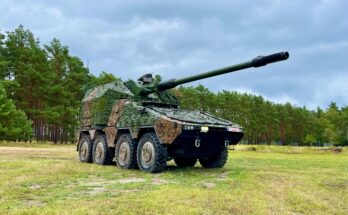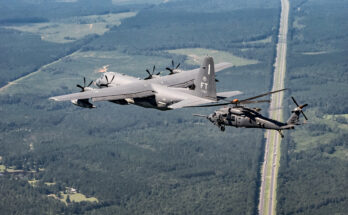by Stuart Slade, Senior Naval Systems Analyst, Forecast International.
The decision to use the LPD-17 design as the baseline for the LX(R) has opened up a major discussion on the future size and composition of the U.S. Navy amphibious warfare fleet. This decision resulted from the Navy’s determination that the Ingalls Shipbuilding production line for LPD-17s is now working so efficiently that another ship could be ordered to bridge the gap between LPD-17 construction and the start of the LX(R) program. As a result, lawmakers provided $1.8 billion for LPD-29, the 13th ship in the class, in the fiscal year 2017 spending plan.
The key here is that the U.S. Navy structures its amphibious assault forces around a three-ship task group. Each group contains one LHA/LHD, one LPD-17, and one LSD-41 (or its LX(R) successor) each. During the Obama administration, a force level of 33 ships (11 amphibious assault groups) was set, despite knowledge that this was inadequate to meet the Navy’s strategic responsibilities. It has been apparent for some months that this force level has been discarded in favor of an increased level. The question is, what will the new force level become?
The order for a 13th LPD-17 supports the perception that a minimum of 39 ships (13 amphibious warfare groups) is now contemplated. This would require the construction of two LX(R) class ships beyond the 11 originally planned. These additional ships also mean that the last LPD-17s and first LX(R)s would be built in parallel, reducing the acquisition costs of both. An additional pair of amphibious assault groups would also require the acceleration of the LHA-8 class to provide an additional two ships of this type within the planned timeframe
However, the possibilities do not end there. Some reports suggest that as many as 17 amphibious assault groups totaling 51 ships can be projected. This number would require significant additional construction of LPD-17 and LHA-8 class ships as well as an extended LX(R) build. At a time when the U.S. Navy faces significant capital expenditure in other areas, including the Columbia SSBN program, this is a major commitment that indicates a major change in naval priorities.
The Trump administration is known to believe that an enhancement of the fleet is essential to provide the maritime capabilities needed to accomplish U.S. strategic priorities. There has been discussion of a 355-ship fleet and of increasing the number of nuclear-powered aircraft carriers from 10 ships to at least 12. The question is how a naval investment plan of this size can be funded without deleterious impacts on the rest of the national force structure.
These issues will not be resolved until Defense Secretary James Mattis releases his defense restructuring plan. The next two or three years are likely to be very interesting as the various priorities concerning amphibious warfare construction in particular and naval construction in general are deconflicted.
Please feel free to use this content with Forecast International and analyst attributions, along with a link to the article. Contact Ray Peterson at +1 (203) 426-0800 or via email at ray.peterson@forecast1.com for additional analysis.
FI’s Naval Systems Market Intelligence Services cover two distinct markets: anti-submarine warfare and warships. The Anti-Submarine Warfare Forecast provides market analysis of the sensors and weaponry used in the detection and prosecution of submarines, while the Warships product covers the full range of worldwide warship programs, including reports on key naval weapons and unmanned surface and subsurface vehicles.
For 50 years, Forecast International intelligence reports have been the aerospace and defense industry standard for accurate research, analysis, and projections. Our experienced analysts compile, evaluate, and present accurate data for decision makers. FI's market research reports offer concise analysis of individual programs and identify market opportunities. Each report includes a program overview, detailed statistics, recent developments and a competitive analysis, culminating in production forecasts spanning 10 or 15 years. Let our market intelligence reports be a key part of reducing uncertainties and mastering your specific market and its growth potential. Find out more at www.forecastinternational.com




